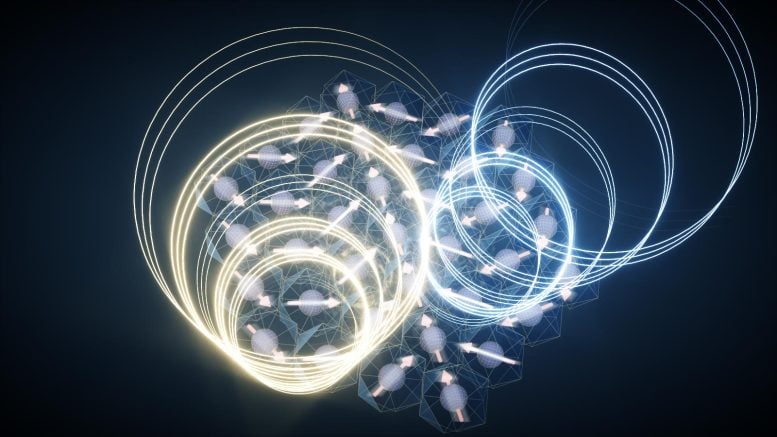
When researchers irradiate a thin layer of nickel iodide with an ultrafast laser pulse, corkscrew-shaped features called “chiral helical magnetoelectric oscillations” arise. These features could be useful for a range of applications, including fast, compact computer memories. Credit: Ella Maru Studio
Researchers discovered that nickel iodide exhibits exceptional magnetoelectric coupling, making it highly suitable for use in high-speed and energy-efficient technologies such as magnetic memories and quantum computing.
The layered multiferroic material nickel iodide may be the best candidate yet for devices such as magnetic computer memory that are extremely fast and compact.
Multiferroics and Nickel Iodide
For decades, scientists have been studying a group of unusual materials called multiferroics that could be useful for a range of applications including computer memory, chemical sensors and quantum computers. In a study published in Nature, researchers from The University of Texas at Austin and the Max Planck Institute for the Structure and Dynamics of Matter (MPSD) demonstrated that the layered multiferroic material nickel iodide (NiI2) may be the best candidate yet for devices that are extremely fast and compact.
Multiferroics have a special property called magnetoelectric coupling, which means that you can manipulate magnetic properties of the material with an electric field and vice versa, electric properties with magnetic fields. The researchers found NiI2 has greater magnetoelectric coupling than any known material of its kind, making it a prime candidate for technology advances.
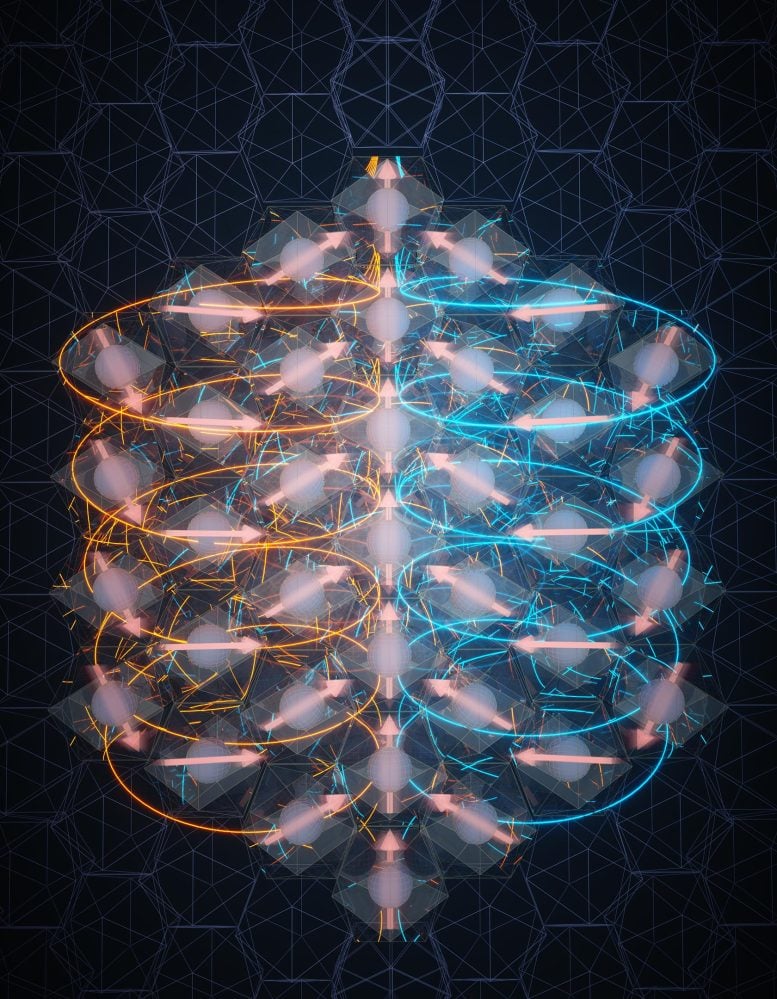
When researchers irradiate a thin layer of nickel iodide with an ultrafast laser pulse, corkscrew-shaped features called “chiral helical magnetoelectric oscillations” arise. These features could be useful for a range of applications, including fast, compact computer memories. Credit: Ella Maru Studio
Breakthrough in Magnetoelectric Coupling
“Unveiling these effects at the scale of atomically thin nickel iodide flakes was a formidable challenge,” said Frank Gao, a postdoctoral fellow in physics at UT and co-lead author of the paper, “but our success presents a significant advancement in the field of multiferroics.”
“Our discovery paves the way for extremely fast and energy-efficient magnetoelectric devices, including magnetic memories,” added graduate student Xinyue Peng, the project’s other co-lead author.
Fundamental Properties and Research Methodologies
Electric and magnetic fields are fundamental for our understanding of the world and for modern technologies. Inside a material, electric charges and atomic magnetic moments may order themselves in such a way that their properties add up, forming an electric polarization or a magnetization. Such materials are known as ferroelectrics or ferromagnets, depending on which of these quantities is in an ordered state.
However, in the exotic materials that are multiferroics, such electric and magnetic orders co-exist. The magnetic and electric orders can be entangled in such a way that a change in one causes a change in the other. This property, known as magnetoelectric coupling, makes these materials attractive candidates for faster, smaller and more efficient devices. For such devices to work effectively, it is important to find materials with particularly strong magnetoelectric coupling, as the research team describes doing with NiI2 in their study.
The researchers accomplished this by exciting the material with ultrashort laser pulses in the femtosecond range (a millionth of a billionth of a second) and then tracking the resulting changes in the material’s electric and magnetic orders and magnetoelectric coupling via their impact on specific optical properties.
Potential Applications and Future Research
To understand why the magnetoelectric coupling is so much stronger in NiI2 than in similar materials, the team performed extensive calculations.
“Two factors play important roles here,” said co-author Emil Viñas Boström of the MPSD. “One of them is the strong coupling between the electrons’ spin and orbital motion on the iodine atoms — that’s a relativistic effect known as spin-orbit coupling. The second factor is the particular form of the magnetic order in nickel iodide, known as a spin spiral or spin helix. This ordering is crucial both to initiate the ferroelectric order and for the strength of the magnetoelectric coupling.”
Materials like NiI2 with large magnetoelectric coupling have a wide range of potential applications, according to the researchers. These include magnetic computer memory that is compact, energy efficient and can be stored and retrieved much faster than existing memory; interconnects in quantum computing platforms; and chemical sensors that can ensure quality control and drug safety in the chemical and pharmaceutical industries.
The researchers hope that these groundbreaking insights can be used to identify other materials with similar magnetoelectric properties and that other material engineering techniques could possibly lead to a further enhancement of the magnetoelectric coupling in NiI2.
Reference: “Giant chiral magnetoelectric oscillations in a van der Waals multiferroic” 17 July 2024, Nature.
DOI: 10.1038/s41586-024-07678-5
This work was conceived and supervised by Edoardo Baldini, assistant professor of physics at UT, and Angel Rubio, director of the MPSD.
The paper’s other UT authors are Dong Seob Kim and Xiaoqin Li. Other authors of MPSD are Xinle Cheng and Peizhe Tang. Additional authors are Ravish K. Jain, Deepak Vishnu, Kalaivanan Raju, Raman Sankar and Shang-Fan Lee of Academia Sinica; Michael A. Sentef of the University of Bremen; and Takashi Kurumaji of the California Institute of Technology.
Funding for this research was provided by the Robert A. Welch Foundation, the U.S. National Science Foundation, the U.S. Air Force Office of Scientific Research, the European Union’s Horizon Europe research and innovation program, the Cluster of Excellence “CUI: Advanced Imaging of Matter,” Grupos Consolidados, the Max Planck-New York City Center for Non-Equilibrium Quantum Phenomena, the Simons Foundation and the Ministry of Science and Technology in Taiwan.




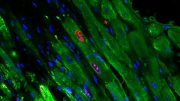
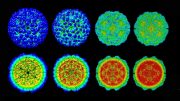
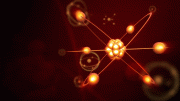
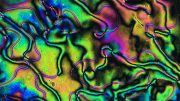

Be the first to comment on "How a Strange New Substance is Set to Change Technology"